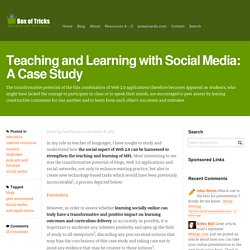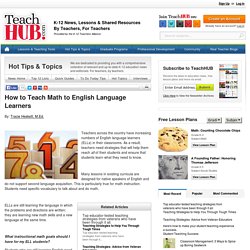

Connectivisme.
CLIL. Crowdsourcing. Tefltecher. Digital presentations in education. What's your story? Technology and Education. Posted by José Picardo on December 31, 2011 In my role as teacher of languages, I have sought to study and understand how the social aspect of Web 2.0 can be harnessed to strengthen the teaching and learning of MFL.

Most interesting to me was the transformative potential of blogs, Web 2.0 applications and social networks, not only to enhance existing practice, but also to create new technology-based tasks which would have been previously inconceivable, a process depicted below: However, in order to assess whether learning socially online can truly have a transformative and positive impact on learning outcomes and curriculum delivery as accurately as possible, it is important to moderate any inherent positivity and open up the field of study to all viewpoints, discarding any preconceived notions that may bias the conclusions of this case study and taking care not to avoid any evidence that may be counter to those notions.
This case study was completed with the help of my colleague, Mr. 16 Ways Educators Can Use Pinterest [INFOGRAPHIC] Teachers are known for their organizational skills, so chances are they'll love Pinterest's intuitive and logical design. The social network's user experience has helped it earn a top spot among today's most popular social networks. Therefore, we predict that teachers will give it a gold star, too. Our friends at OnlineUniversities.com have put together the following infographic, which details how teachers can use Pinterest to organize lesson plans, distribute curricula, collaborate with other faculty, and even encourage student participation.
SEE ALSO: 9 Ways to Engage Your Employees on Pinterest Remember, however, that Pinterest's terms of service dictate that users under the age of 13 are prohibited. Image courtesy of Flickr, cybrarian77. CLIL lesson for Science/Geography. This lesson plan is another "present" by Dr Diana Hicks. Brilliant course and brilliant teacher indeed. So, once again, thank you Mrs Hicks and thank you Comenius :) I was planning to try this activity in one of my History courses, as it can be adapted to suit different subjects.
CLIL Projects and Materials (ready to be used) / Actividades y materiales CLIL - listos para usar / Add phonetic transcription to any English text with Phonetizer. Weconnect [licensed for non-commercial use only] / PLN. 5 Personal Learning Networks (PLNs) for Educators. Professional development and networking are vital in any field, and that’s especially true for educators. Whether it’s coming up with fresh ideas for lesson plans and classroom activities, seeking mentorship and support from veteran educators, or cultivating resources for technology integration or for meeting state standards, teachers need one another’s expertise. That’s why working with other educators in personal learning networks (PLNs) has become as important in an educator’s day as the time he or she spends teaching in class.
Below is a short list of PLNs that already exist, followed by some resources to help teachers build their own The Educator’s PLN is a Ning site (or online platform for creating your own social network) that facilitates connections between educators. Resources for Building or Finding Your Own. WEB VP 1.
Free Tools To create and Administer Quizzes. Personalized Learning 30-31. Personalized Learning 14-15. The ‘little book of ICT ideas’ How Technology Could Improve Personalized Learning. Digital Learning should be Personalized Learning is the post organizing key findings and resources about leveraging digital learning to fulfill personalized learning. In this post are more valuable insights, analysis and experience sharing about learner-centered learning. Don’t forget to check out more resources curated by Kathleen McClaskey : Personalized Learning . “Personalized learning, to me, is the process of contouring learning to the individuals that you’re dealing with, recognizing that we all have different strengths and weaknesses, different interests [and] different ways of learning.” “ … personalized learning is finding the best ways to engage with people with different interests, passions and ways of thinking.” ) - Quote from Paul Lorette , the principal of Brackendale Elementary School in Squamish, British Columbia.
Word Lists. The Academic Word List Useful academic vocabulary is contained in the Academic Word List, which is divided into 10 sublists in order of frequency, ie Sublist 1 has the most frequent academic words.

117078_Teaching_Geography_through_English_-_a_CLIL_Approach.pdf (Oggetto application/pdf) How to Teach Math to English Language Learners. Teachers across the country have increasing numbers of English language learners (ELLs) in their classrooms.

As a result, teachers need strategies that will help them reach all of their students and ensure that students learn what they need to know. Many lessons in existing curricula are designed for native speakers of English and do not support second language acquisition. This is particularly true for math instruction. Students need specific vocabulary to talk about and do math. Top educator-tested teaching strategies from veterans who have been through it... Answers to many teachers’ frequently asked questions, as well as a few teaching...
Here's how to make your student teaching experience a success. Digital classrooms. Robin Yu.